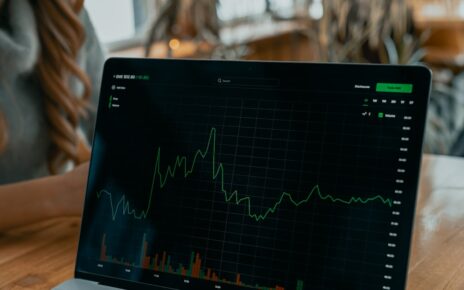The Impact of Currency Depreciation on International Investments: Assessing Exchange Rate Risk
In this article, we will explore the crucial topic of “The Impact of Currency Depreciation on International Investments” and delve into the assessment of exchange rate risk. International investments can yield tremendous opportunities for diversification and higher returns, but they also come with inherent risks, and one of the most significant risks is exchange rate fluctuations. As a reputable source in the realm of finance, we aim to provide you with a comprehensive understanding of this complex subject.
Understanding Currency Depreciation
Currency depreciation refers to a decline in the value of one country’s currency concerning another currency. This devaluation can occur due to several factors, such as economic performance, inflation rates, political stability, and monetary policies. When a country’s currency depreciates, it means that it takes more units of that currency to purchase one unit of another currency. Consequently, this has a direct impact on international investments.
Exchange Rate Risk and Its Ramifications
Exchange rate risk is a critical consideration for any investor involved in international investments. The volatility of exchange rates can lead to substantial gains or significant losses, affecting the overall returns on investments. When a local currency depreciates against the currency in which an investment is denominated, it can erode the returns and potentially even result in losses. Conversely, if the local currency appreciates, it can boost returns for the investor.
Evaluating Exchange Rate Risk
To effectively manage exchange rate risk, investors must adopt strategies that provide protection against adverse currency movements. Hedging is a common practice used to mitigate this risk. By employing various financial instruments like futures, options, and forward contracts, investors can safeguard their investments from the impact of currency depreciation.
However, it is essential to recognize that hedging is not a one-size-fits-all solution and may come with associated costs. In some cases, it might be more prudent to embrace the potential risks and not hedge, especially if the investor has a high tolerance for risk and believes that the currency fluctuations might be in their favor.
Diversification as a Risk Management Tool
Another approach to manage exchange rate risk is through diversification. By spreading investments across different currencies and countries, investors can reduce their exposure to the risk associated with a single currency’s depreciation. Diversification allows investors to capitalize on varying economic conditions and can be an effective way to balance out potential losses in one market with gains in another.
The Role of Economic Indicators
To make informed decisions in international investments, understanding key economic indicators is crucial. Economic indicators, such as interest rates, inflation rates, GDP growth, and trade balances, can significantly impact currency valuations. Monitoring these indicators of both the home and foreign countries can provide valuable insights into potential currency movements.
Long-Term vs. Short-Term Investments
When evaluating exchange rate risk, the investment time horizon plays a vital role. Long-term investments typically have a higher capacity to weather short-term currency fluctuations. The long-term growth potential of certain economies can overshadow short-term currency depreciation risks.
On the other hand, short-term investments demand a more cautious approach, as they are more susceptible to rapid currency movements. Traders and short-term investors need to stay vigilant and monitor currency markets closely to capitalize on opportunities and manage risks effectively.
Understanding Carry Trade Strategy
The carry trade strategy is an investment technique that capitalizes on interest rate differentials between two currencies. In a carry trade, an investor borrows money in a low-interest-rate currency and invests it in a high-interest-rate currency. The difference in interest rates generates a positive cash flow, which can lead to profits.
However, carry trade comes with inherent risks, mainly due to exchange rate fluctuations. If the high-interest-rate currency depreciates against the low-interest-rate currency, the gains from the interest rate differential can be negated, resulting in losses for the investor.
Government Policies and Their Impact
Government policies, both fiscal and monetary, play a significant role in influencing currency valuations. A country’s central bank’s decisions regarding interest rates, money supply, and quantitative easing measures can substantially affect the currency’s strength.
Furthermore, government actions, such as trade tariffs, import/export regulations, and political stability, can also impact currency depreciation or appreciation. Investors must keep a keen eye on government policies and be prepared to adapt their strategies accordingly.
The Impact of Global Events
Global events can have a profound impact on currency markets and, consequently, international investments. Political turmoil, geopolitical tensions, economic crises, and natural disasters can trigger sudden and drastic currency fluctuations.
Investors must be proactive and flexible in response to these events. They should consider the potential effects on currency values and adjust their portfolios accordingly to minimize losses and capitalize on opportunities.
In conclusion, understanding the impact of currency depreciation on international investments and assessing exchange rate risk is paramount for any investor looking to venture into global markets. Exchange rate fluctuations can significantly influence the overall performance of investments, either enhancing returns or leading to losses.
To navigate the complexities of exchange rate risk, investors should carefully evaluate their risk tolerance, employ suitable hedging strategies, and consider diversification as a risk management tool. Staying informed about economic indicators, government policies, and global events will aid in making well-informed investment decisions.
Remember, international investments can be rewarding, but they require diligence, research, and a comprehensive understanding of the interplay between currencies and financial markets.



